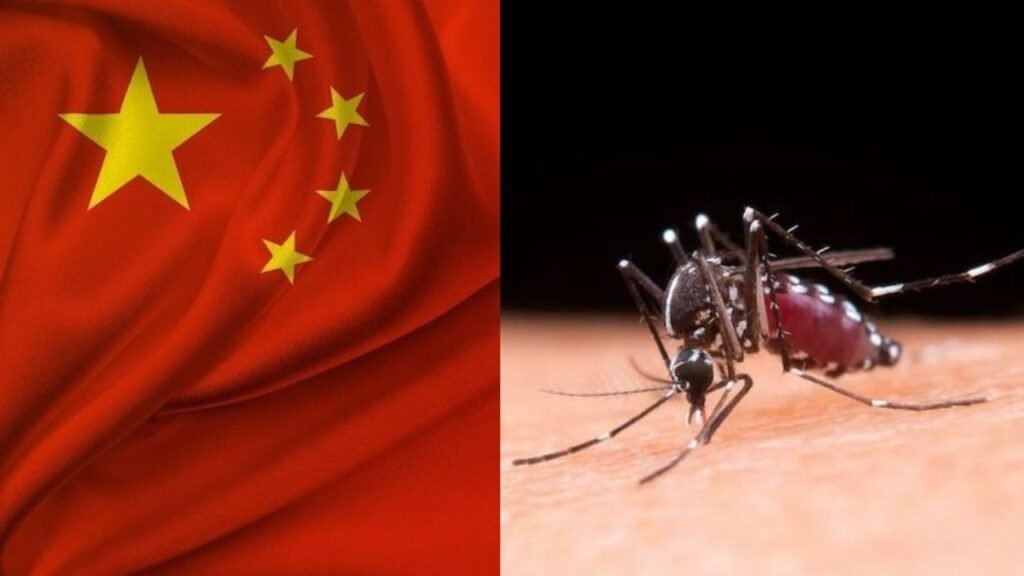Chikungunya Virus: Global Updates and Insights for 2025
Chikungunya virus (CHIKV), a mosquito-borne alphavirus transmitted primarily by Aedes aegypti and Aedes albopictus mosquitoes, continues to pose a significant public health challenge worldwide. First identified in Tanzania in 1952, the virus causes a debilitating illness characterized by sudden fever, severe joint pain, headache, muscle pain, fatigue, and rash. The name “chikungunya” derives from the Kimakonde language, meaning “to become contorted,” reflecting the severe joint pain that often leaves patients stooped. This article provides an in-depth look at recent updates on chikungunya in 2025, drawing from global health reports and scientific advancements, with a focus on epidemiology, vaccine developments, and prevention strategies.
Global Epidemiology in 2025
Chikungunya has seen a resurgence in 2025, with significant outbreaks reported across multiple continents. According to the European Centre for Disease Prevention and Control (ECDC), approximately 240,000 cases and 90 related deaths have been reported across 16 countries in the Americas, Africa, Asia, and Europe as of July 2025. The Americas, particularly Brazil (185,553 cases), Bolivia (4,721 cases), Argentina (2,836 cases), and Peru (55 cases), account for the highest number of cases. Asia has reported over 34,000 cases from countries such as India, Sri Lanka, Mauritius, Pakistan, and China. Africa has seen cases in Senegal, Kenya, Madagascar, and the Seychelles, with imported cases in the EU/EEA suggesting wider circulation in the Indian Ocean region.
A notable outbreak in China’s Guangdong province, particularly in Foshan city, has reported over 7,000 cases since July 2025, prompting stringent public health measures reminiscent of COVID-19 protocols. These include hospital quarantine under mosquito nets, door-to-door inspections to eliminate stagnant water, and the release of “elephant mosquitoes” and mosquito-eating fish to control vector populations. In La Réunion, an estimated one-third of the population has been infected, with over 47,500 cases and 12 deaths reported between August 2024 and May 2025. Mayotte remains in an epidemic phase with intense transmission since May 27, 2025.
In Europe, the risk of local transmission is rising due to the presence of Aedes albopictus mosquitoes, particularly in southern regions. France has reported around 800 imported cases and 12 local transmission events since May 2025, with a recent case detected in Italy. India has seen chikungunya become endemic, with 192,343 cases in 2024 and ongoing transmission in states like Maharashtra and Telangana in 2025. These figures highlight the virus’s ability to spread rapidly in areas with competent vectors and immunologically naive populations.

Transmission and Risk Factors
Chikungunya is primarily transmitted through the bite of infected Aedes mosquitoes, which are active during the day and thrive in urban environments. The virus can circulate between humans and mosquitoes, with humans serving as amplifying hosts during outbreaks. In Africa, a sylvatic cycle involves non-human primates and small mammals, but urban outbreaks rely on human-mosquito-human transmission. Rare non-vector transmission routes include bloodborne transmission (e.g., via needlestick injuries) and vertical transmission from mother to child during delivery, particularly if the mother is viremic near birth.
Climate change and global travel have exacerbated the spread of chikungunya. Warmer temperatures and increased rainfall create favorable conditions for mosquito breeding, while infected travelers introduce the virus to new regions. The Aedes albopictus mosquito, now established in parts of Europe and the Americas, has adapted to transmit CHIKV more efficiently due to viral mutations, such as those observed in the 2005–2006 Reunion Island outbreak.
Symptoms and Clinical Impact
Chikungunya typically presents with abrupt fever and severe joint pain, often debilitating and lasting days to months. Other symptoms include headache, muscle pain, joint swelling, nausea, fatigue, and rash. While most patients recover within a week, chronic joint pain (post-chikungunya chronic rheumatism) can persist for months or years, significantly impacting quality of life. Severe complications, though rare, are more likely in newborns, older adults, and those with comorbidities, potentially leading to organ damage or death.
The virus’s similarity to dengue and Zika complicates diagnosis, as symptoms overlap. Misdiagnosis is common in regions where these diseases co-circulate, necessitating laboratory confirmation through IgM/IgG ELISA or RT-PCR tests. Recent studies emphasize the importance of using whole-virus antigens for improved diagnostic sensitivity.

Vaccine Developments
A significant advancement in 2025 is the availability of two chikungunya vaccines, though they are not yet widely used. The U.S. Food and Drug Administration (FDA) approved IXCHIQ (Valneva), a live-attenuated vaccine, in 2023 for adults aged 18 and older, with recommendations from the U.S. Advisory Committee on Immunization Practices (ACIP) for travelers to outbreak areas. VIMKUNYA (Bavarian Nordic), a virus-like particle vaccine, was approved in 2024 for those aged 12 and older. Both vaccines have shown good immunogenicity and safety profiles, with common side effects including injection site tenderness, headache, and fatigue.
However, these vaccines are primarily recommended for travelers to high-risk areas and are not widely available globally. The World Health Organization (WHO) is reviewing trial data to inform broader recommendations, but no vaccine is currently approved in countries like Australia. Other vaccine candidates, including recombinant and DNA-based vaccines, are in development, offering hope for future prevention strategies.
Prevention and Control Measures
With no specific antiviral treatment available, chikungunya management focuses on symptom relief using acetaminophen for fever and pain, hydration, and rest. Non-steroidal anti-inflammatory drugs (NSAIDs) and aspirin are avoided until dengue is ruled out to minimize bleeding risks.
Prevention relies heavily on vector control and personal protection. Key measures include:
- Eliminating mosquito breeding sites: Removing stagnant water from containers, flowerpots, and other sources.
- Insecticide use: Spraying to kill adult mosquitoes and treating water sources to eliminate larvae.
- Personal protection: Wearing long clothing, using DEET-based repellents, and installing window screens or insecticide-treated bed nets, especially for daytime use.
- Innovative approaches: The World Mosquito Program’s Wolbachia method, which introduces bacteria into Aedes mosquitoes to block viral transmission, is showing promise in reducing chikungunya, dengue, and Zika transmission.
Travelers to endemic areas are advised to take enhanced precautions, particularly during the rainy season (June to November in many regions), when mosquito activity peaks.
Regional Concerns and Future Outlook
The WHO has raised urgent concerns about chikungunya’s resurgence, drawing parallels to the 2004–2005 epidemic that affected nearly half a million people. With 5.6 billion people at risk across 119 countries, proactive measures are critical. In China, the rapid spread in Guangdong has led to speculation about climate-driven increases in mosquito populations, with studies modeling future transmission risks. In Australia, while no local transmission has been recorded, the presence of Aedes mosquitoes in Queensland and the Torres Strait raises concerns, especially with 90 travel-associated cases reported in 2025.
Social media posts on X have highlighted public anxiety, with some falsely linking chikungunya outbreaks to genetically modified mosquitoes. These claims lack evidence and should be treated with skepticism, as the virus’s spread is driven by established vectors and environmental factors.
Conclusion
Chikungunya remains a dynamic global health threat in 2025, with significant outbreaks in Asia, the Americas, Africa, and Europe. Advances in vaccine development offer hope, but their limited availability underscores the importance of vector control and personal protection. As climate change and global travel continue to facilitate the virus’s spread, coordinated public health responses are essential to mitigate its impact. Travelers, healthcare providers, and policymakers must remain vigilant, leveraging both traditional and innovative strategies to combat this debilitating disease.














Post Comment